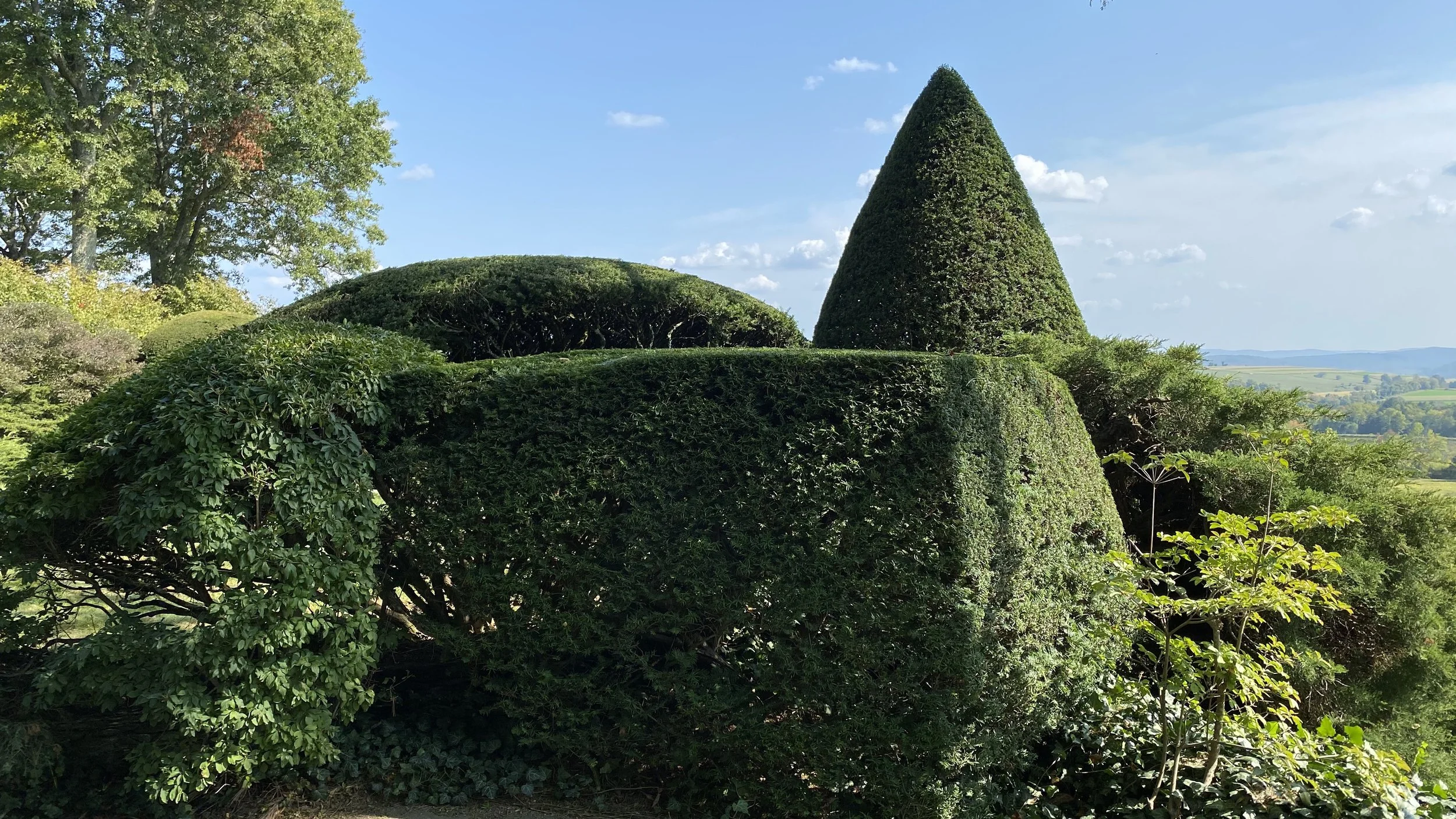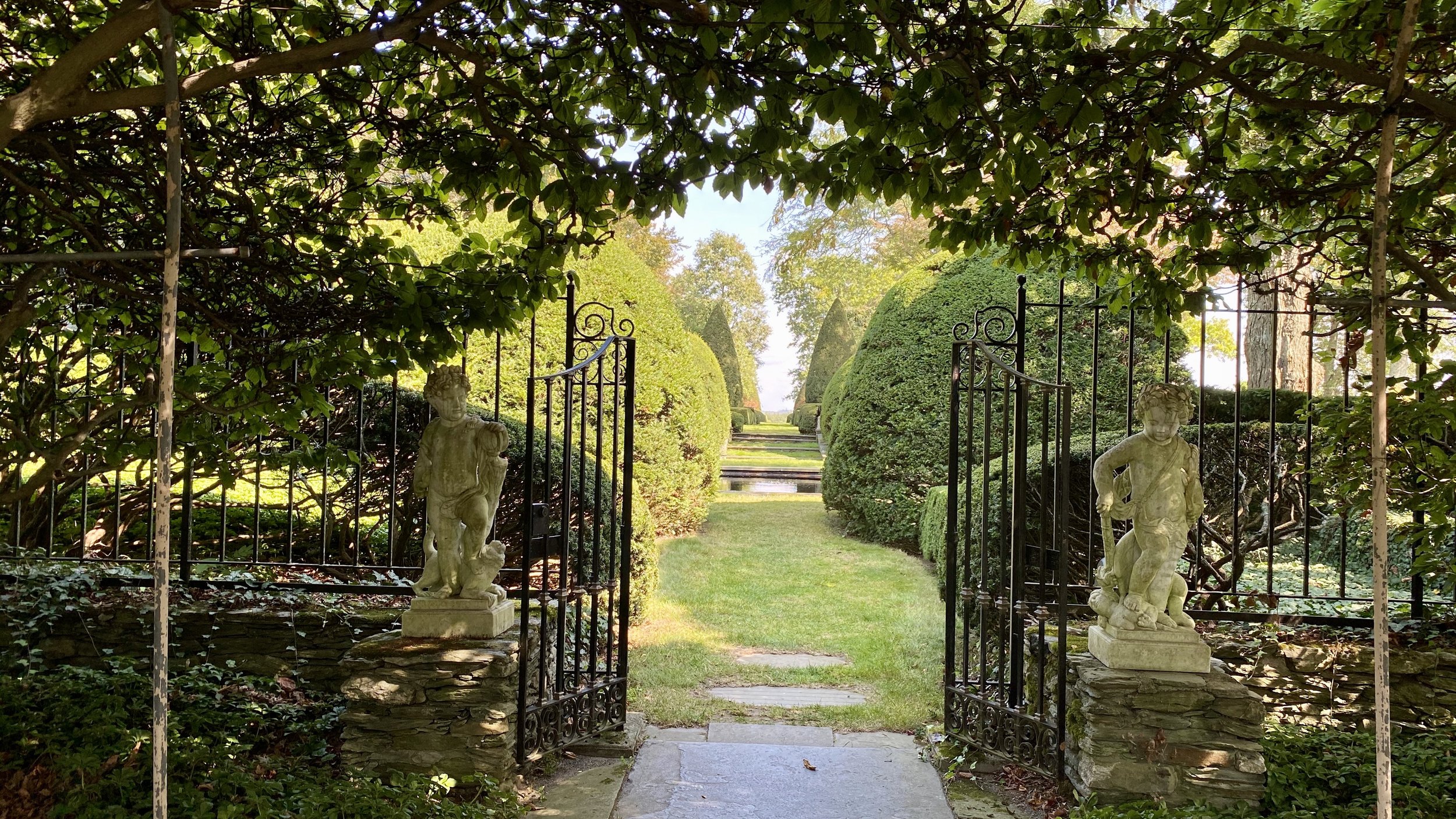Wethersfield Farm
National Register HIstoric District
Winner, New York State Historic Preservation Award for Excellence in Historic Landscape Preservation, 2021
Architectural & Cultural Landscape Historian
Friends of Wethersfield
Amenia, NY
2021
Wethersfield, in the town of Stanford, in Dutchess County, New York, stands as a remarkably intact example of a country estate from the mid-twentieth century, featuring 1,000 acres of designed and working landscapes organized around the highest point in the local agricultural landscape (1,212 feet AMSL). At its heart, and the property’s focal point is the rambling two-story, brick Georgian Revival house designed by Bancel Lafarge in 1939 (LaFarge & Knox, 1939-41; LaFarge, Knox & Murphy, 1950; George F. Poehler, 1970-71), and the roughly five-acre Arts & Crafts and Italian garden by landscape architects Bryan J. Lynch (c. 1940-1950) and Evelyn N. Poehler (1947-1965, with later additions). The gardens have been identified by classical scholar Henry Hope Reed as “the finest classical garden in the United States built during the second half of the twentieth century.” In addition to the formal gardens, an approximately seven-acre “Wilderness Walk,” also laid out by Evelyn N. Poehler, within the forested area southwest of the house is filled with looping carriage paths and studded with statuary commissioned specifically for the site.
The agricultural lands, which span the unpaved Pugsley Hill Road and extend up to the house and gardens, are still farmed. The open agricultural land affords stunning vistas of the Berkshire and Taconic Mountain ranges, principally to the south and east of the house and gardens. Five ponds developed in the historic period for conservation purposes remain functional as water sources and habitat.
While the majority of the gardens and landscape designs were completed by the early 1970s, the Palladian Arch by George Poehler was the last significant and cohesive addition to the landscape, and therefore the historic district’s period of significance extends from the construction of the first building on the estate, the stable, in 1937 to the installation of the Palladian Arch in 1977. The collection of resources within the estate boundary is extensive and multidimensional, including buildings, sites, structures and objects. Although the gardens can be thought of in sections defined by styles, they make up a cohesive designed landscape and therefore are counted as one contributing site with certain components individually defined as contributing resources. Overall, there are twenty-five contributing buildings include the main house, five frame tenant houses, a brick and frame stable, a late-nineteenth-century farm complex that predates Wethersfield, and assorted tool sheds, greenhouses, and garages. Three buildings are considered non-contributing. The house and gardens, along with the broader landscape and accessory buildings, retain a high degree of integrity and have been wellnmaintained. The house has remained virtually unchanged, and although the landscape has matured over the years and some plantings have been restored or rehabilitated, Wethersfield remains strongly reflective of its period of significance, 1937-77.






